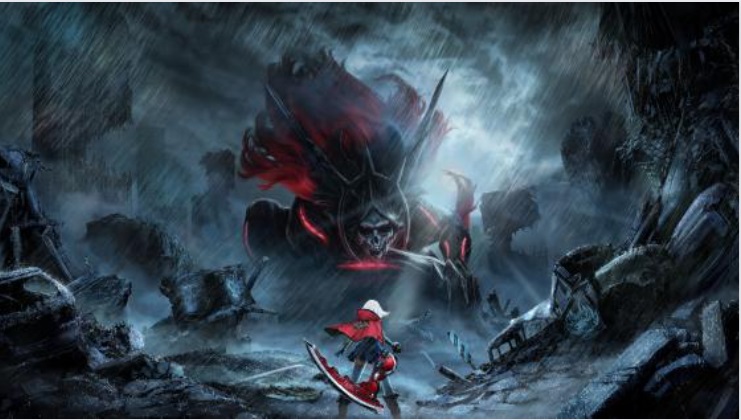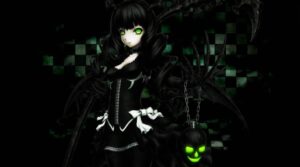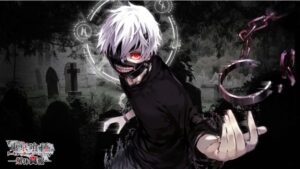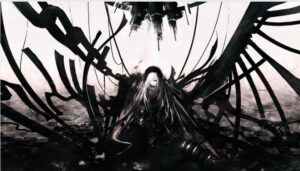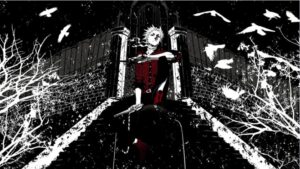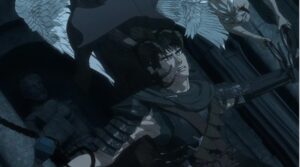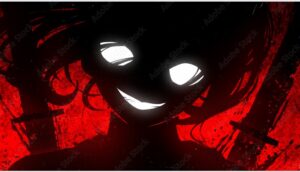I’ve always been fascinated by the intricate world of anime. The stories, characters, and themes are as diverse as they come. A perfect example is a unique plot that revolves around a young boy who sells his soul to a demon. This concept might sound dark, but it’s tackled with exceptional creativity and depth in the anime genre.
Believe it or not, the idea of bargaining one’s soul isn’t new in literature. But when this theme got introduced into anime–a medium known for its vibrant artistry and profound storytelling–it breathed new life into an old trope. The fusion of traditional folklore elements with contemporary narrative techniques anime yang menceritakan seorang bocah yang menjual jiwanya ke iblis resulted in an engaging series that left viewers glued to their screens.
Anime like these make you question morality, destiny, and even existence itself while delivering thrilling entertainment. But more than anything else, they highlight the resilience of human spirit against overwhelming odds – a common thread seen throughout many anime series. So whether you’re an avid anime enthusiast or just dipping your toes into this vast sea of animated brilliance, prepare yourself for an exhilarating ride through tales filled with demons, souls and heart-stopping adventures!
Anime Yang Menceritakan Seorang Bocah Yang Menjual Jiwanya Ke Iblis
Ever notice how some anime characters strike a deal with the devil for power? It’s a fascinating concept, isn’t it? The idea of trading one’s soul for temporary gain has been used as a plot device in numerous anime shows. This narrative trope often leads to complex, morally ambiguous stories that engage viewers on multiple levels.
Take “Black Butler” (Kuroshitsuji), for instance. Here we have Ciel Phantomhive, who made a pact with Sebastian – an infernal being masked as a butler. The young protagonist sells his soul to seek revenge on those who wronged him. But this arrangement is not without its drawbacks; it constantly reminds us of the looming doom that awaits Ciel once his contract is fulfilled.
Then there’s “Soul Eater,” where humans can transform into weapons when their wielder consumes 99 evil souls and one witch’s soul. But what if they mess up and eat an innocent soul by accident? They turn into Kishins – beings akin to devils – and risk losing their humanity completely.
In “Shakugan no Shana,” Yuji Sakai makes a deal with Shana, a Flame Haze (a human-devil hybrid). He sacrifices his existence so she can continue protecting the world from denizens of Crimson Realm. Again, we see our hero paying an enormous price for power.
These are just scratching the surface though! There are countless other shows like “Hell Girl,” “Devilman Crybaby,” or even light-hearted ones such as anime yang menceritakan seorang bocah yang menjual jiwanya ke iblis! that add unique twists to this age-old theme:
- In Hell Girl, people access Hell Correspondence website at midnight allowing them to send their tormentors directly to hell.
- Devilman Crybaby explores how embracing demonic powers could lead down an irreversible path of self-destruction.
- The Devil Is A Part-Timer! flips the script entirely, depicting Satan as a fast-food employee in modern Tokyo.
These anime series highlight the moral and ethical implications of selling one’s soul to the devil. They depict how characters grapple with their choices, often leading to tragic outcomes or unexpected growth. It’s indeed an intriguing concept that continues to captivate anime fans worldwide.
The Intriguing Premise of the Anime
Stepping into the realm of fantasy, this anime unravels an eerie yet hypnotic tale of a young boy who trades his soul. The storyline, laced with suspense and drama, holds viewers captive, pushing them to the edge of their seats.
Taking an unconventional route, it dives deep into the intense struggle of the central character, portraying the dire consequences of the inexplicable deal. It’s not just a play of suspense and thrills, but also a psychological exploration that arouses curiosity, fascination, and an array of emotions.
Profound and unconventional, this anime is a testament to the creativity and innovation in storytelling. Its distinct narrative style and well-crafted characters encapsulate the essence of innovative artistry, leaving viewers engrossed and eager to delve deeper.
Unveiling the Protagonist’s Dilemma
Steeped in a turmoil of emotions, the protagonist’s woes are not for the faint-hearted. With his soul sold, he grits his teeth against the growing despair. The unfolding narrative reveals the boy’s torment with each passing episode. Drama seeping into every twist and turn, it never fails to keep the viewers on the edge of their seats.
Falling deeper into the psychic abyss, the boy finds himself entrapped. His life, no longer what it used to be, spirals out of control. The narrative masterfully conveys the dire repercussions of his impulsive decision. Intermingled with suspense and psychological intrigue, the anime takes a dive into the unknown, always leaving viewers hungry for more.
Main Character Selling Their Soul in Exchange for Power
I’ve always been intrigued by the concept of a protagonist selling their soul in exchange for power. It’s a theme deeply ingrained across various forms of media, but nowhere more so than in anime. This dramatic narrative trope adds an edge to the storyline and provides depth to the characters involved.
Consider “Black Butler” (Kuroshitsuji), a popular anime where a young aristocrat, Ciel Phantomhive, trades his soul to a demon named Sebastian Michaelis. In return, Sebastian vows to help Ciel exact revenge on those who have wronged him. The plot is rich with moral dilemmas and questions about the value of one’s humanity.
Another prime example is “Soul Eater”. In this series, humans can transform into weapons if they consume 99 evil souls and one witch’s soul – quite literally trading their human essence for immense strength. It’s not an easy journey as they grapple with self-doubt, fear, pride, and guilt throughout their quest.
Anime like these provoke thought about what we’re willing to surrender for power or vengeance. They often incorporate elements such as:
- Sacrifice: What are we ready to give up? Is it worth it?
- Consequences: How does our decision impact us and those around us?
- Redemption: Can we find redemption after making such a choice?
These themes resonate with viewers because they mirror our own internal battles – albeit in more fantastical settings. We may not be trading our souls with demons or eating souls for power but we all face choices that test our values and principles.
In conclusion, the concept of characters selling their souls for power serves as a compelling metaphor in anime storytelling. It allows writers to explore profound themes while providing captivating narratives that keep audiences hooked episode after episode.
Themes of Morality and Consequences in the Storyline
Morality isn’t a straightforward concept, especially when it comes to anime. More often than not, these Japanese animated series go beyond the black-and-white notions of right and wrong. Taking our focus anime as an example – this is a story where a young boy sells his soul to a devil. Now, that’s quite a leap from your typical Saturday morning cartoons!
In this particular plot line, you’ll find yourself drawn into moral complexities that are hard to ignore. The protagonist takes the decision out of desperation and despair – but does that justify his actions? Or make them any less wrong? It’s questions like these that drive the narrative forward.
Consequences play just as pivotal a role as morality in this storyline. Consequences aren’t simply punishments or rewards for one’s actions; they are also reflections of choices made. In our boy-turned-demon tale, every action taken has its own ripple effect on everyone involved.
Take for instance when he uses his newfound demonic powers – each time he does so, it impacts those around him and further distances him from his humanity. And let’s not forget about the emotional toll it takes on him personally.
This anime masterfully intertwines themes of morality and consequences throughout its narrative, making viewers question their own beliefs along the way. You’re left wondering what you’d do if placed in similar situations – sell your soul for survival or hold onto your humanity against all odds?
It’s clear how such narratives can serve as potent explorations into moral dilemmas we face in real life too. Anime doesn’t shy away from presenting us with complex characters who blur lines between good and evil – proving once again why it remains such an influential medium across borders.
Depiction of the Devil or Demonic Entities in Anime
It’s fascinating to explore how anime portrays the devil and demonic entities. These portrayals often serve as intriguing plot devices, helping to shape narratives that captivate audiences worldwide. In many series, these dark figures are not just symbols of evil but complex characters with their own motivations and stories.
Let’s dive into some specific examples. One prominent instance is found in “Black Butler”. Here, a young boy named Ciel Phantomhive sells his soul to a demon named Sebastian Michaelis. While Sebastian may appear as an impeccable butler on the surface, his demonic nature is revealed through his extraordinary powers and ruthless execution of any threats to Ciel.
Another thought-provoking example comes from “Blue Exorcist”. This show revolves around Rin Okumura who discovers he’s actually the son of Satan. What makes this depiction unique is that instead of accepting his roots, Rin decides to become an exorcist to fight against his own lineage.
In “Death Note”, we encounter Ryuk, a Shinigami – a god of death in Japanese mythology – who drops a Death Note into the human world out of boredom. Ryuk isn’t exactly devilish or evil per se; he simply observes humans’ actions with disinterest and amusement.
Anime also presents us with shows like “Devilman Crybaby” where Akira Fudo becomes possessed by a demon yet retains his human heart. He uses these newfound powers to protect humanity from other demons, providing another unconventional portrayal.
Here are some key takeaways:
- Demonic entities in anime aren’t always straightforwardly evil.
- Characters like Sebastian (Black Butler) and Rin (Blue Exorcist) portray demons with depth and complexity.
- Shows like ‘Death Note’ introduce mythological creatures such as Shinigami adding different layers to this theme.
These varied depictions allow viewers to delve deeper into the complexities of good vs. evil, challenging traditional perceptions and offering fresh perspectives on age-old themes. The devil or demonic entities in anime aren’t just one-dimensional villains; rather, they’re often multi-faceted characters who add depth to their respective narratives.
Impact on the Main Character’s Journey and Growth
Let’s dive right into how our protagonist’s pact with a demon shapes his journey and development. The first thing to note is how dramatically this decision alters his life trajectory. He’s not just a regular kid anymore; he’s bound to a supernatural entity, thrusting him into situations that are anything but ordinary.
For starters, the main character gains powers beyond human capabilities, which at first might seem like an epic win. Yet, these very abilities force him into battles and challenges he’d never have encountered otherwise. It’s not all about flashy fights though; it also takes a toll on his everyday life. Picture this – trying to balance schoolwork while secretly dealing with demonic issues? That sure sounds like one heck of an after-school activity!
This unusual setup does provide some unique opportunities for growth too. The protagonist has to mature quickly, learning to make tough decisions under pressure as well as mastering self-control over his newfound powers. This relentless struggle fosters resilience in our young hero.
However, it ain’t all sunshine and rainbows in the world of demons. There’s always this looming risk of losing control or being consumed by the very power he wields – a constant reminder of the double-edged sword that is his pact with the demon.
Lastly, let me address what I believe is one of the most significant impacts – isolation from peers due to his secret life. It adds an emotional depth to our hero’s journey where he navigates loneliness alongside physical battles.
All things considered, selling one’s soul isn’t exactly your typical childhood experience! Yet it propels our protagonist onto a path filled with trials and tribulations that ultimately shape him into a stronger individual.
All You Need To Know
Anime, with its rich narratives and unique art style anime yang menceritakan seorang bocah yang menjual jiwanya ke iblis, never ceases to surprise me. That’s particularly true when it comes to stories like the one we’ve been discussing: a tale of a young boy who sells his soul to a demon. It’s a narrative that explores themes of morality, sacrifice, and personal growth in an engaging and compelling way.
Over the course of this article, I’ve delved deep into the plot details and character development present in our subject anime. The characters aren’t just two-dimensional drawings; they’re complex beings with their own motivations and desires that drive them forward throughout the story.
The protagonist’s journey is fraught with moral dilemmas as he navigates his new life bound to a demonic entity. His struggle serves as an allegory for many real-life situations where individuals are forced to make difficult decisions under extreme circumstances.
This anime also showcases how even dark entities can harbor unexpected depth. The demon isn’t portrayed as purely evil but has its own set of emotions, making it far more relatable than one might initially think.
In terms of animation quality and soundtrack selection, this anime ticks all the boxes too. It combines stunning visuals with captivating music that truly immerses viewers into its world.
So why do I find this anime so intriguing? It’s because it pushes boundaries and challenges our perceptions about good versus evil or right versus wrong. And isn’t that what great storytelling is all about?
Whether you’re an avid anime fan or someone new to this type of media content, I highly recommend giving this show a chance. You’ll likely find yourself drawn into its world just like I was.

